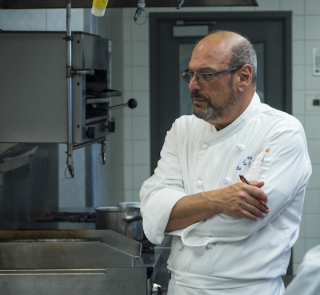
The Care and Feeding of Technical Advisory Committees
02 September 2019TAC meetings should be led by industry experts and not culinary program instructors.
By Chef Adam Weiner, JD, CFSE
There is a Jimmy Buffet song from 1994 which contains the lyrics: “Relationships. We all got them. We all want them. Now, what do we do with them?” My take on this is: “Advisory Committees. We all got them. The administration wants them. Now, what do we do with them?”
I first heard about Technical Advisory Committees (TAC) when I was working on my teaching credential. It sounded like a dreadful idea: have a bunch of people who aren’t teachers sit in your room and tell you everything you should teach with no regard to the class time, ability of the students, or your food budget.
My first five or six TAC’s were painful, but for different reasons. The people on the committee actually gave me some extremely useful advice that fit within all of my parameters. The problem was the school didn’t want to change anything. They would say, “We’ve always done it that way.” One day my entire TAC walked out in protest. They made the argument that they were giving up work time to be there and yet nothing ever changed. They had a valid point.
Over the next several years, I was asked to sit on a number of TAC’s for other programs. I found these frustrating experiences. The format was the same. I would go to a meeting. A presentation was given about what the school was teaching. There would be a demonstration of some skill or a speech by a student, we’d have lunch, and then we would all leave. We were solicited to write our opinions, but when I went to the next TAC meeting at one of those programs nothing had changed in their curriculum or in their teaching.
Many years later, a new head of the school came in to watch my TAC and was taken aback by the forceful manner of the suggestions and the way that a number of people whom she knew were my friends or close industry colleagues were taking me on in what I was teaching and how I was teaching it. After the meeting she came up to me and laughingly said, “Well, no one could ever accuse you of picking Yes Men and Yes Women for your committee.”
About a year ago, Barrie Hathaway, CEO of JobTrain, announced he wanted to try a new type of TAC. The thrust of that new model was that the meeting would be run by an industry member and that the school people would listen and learn about what the industry wanted and needed from culinary graduates. He even had a diagram where the members of the committee would sit around a conference table and the members of the school observed from the sides of the room!
To say I felt vindicated for all the years of wanting to follow the suggestions of each successive TAC is an understatement. Hathaway’s view to the school (which I tried to adopt in my course’s TAC and suggest to be the rule for any TAC’s of which I was a member) was that the whole purpose of the meeting is to listen to the members of the industry and let them tell the culinary programs what they want. More importantly, they usually do understand the limitations and constraints of our programs.
I am all in favor of this and think you will be too after you give it a try. As with most things in life, there are a few guidelines (okay, rules) that will make this more efficient, productive, and less nerve-wracking.
- Ask people to sit on your TAC whom you know are believers and supporters of your program and who have the best interests of your students at heart.
- Don’t meet more than once a year if possible. Let’s be realistic, you can only change your program so fast.
- Let the members, not you, drive the meeting’s agenda, take the notes, etc. You and the members of your school should sit back and just listen.
- Have your students make cookies or a light snack. Don’t take up the limited time of the committee members with lunch or student presentations. (You have already selected members of the committee who believe in your students.)
- Ask the member in charge to stick to only one hour or one class period.
- Try to get your school to let the committee’s recommendations be put into place or, at a minimum, actually tried.
Finally, the longer you have been out of the industry, the more important it is for you to have a TAC and pay attention to what each member says and to the recommendations of the committee overall.
Chef Adam Weiner, JD, CFSE, has been a culinary instructor in the San Francisco Bay Area for more than 16 years.
